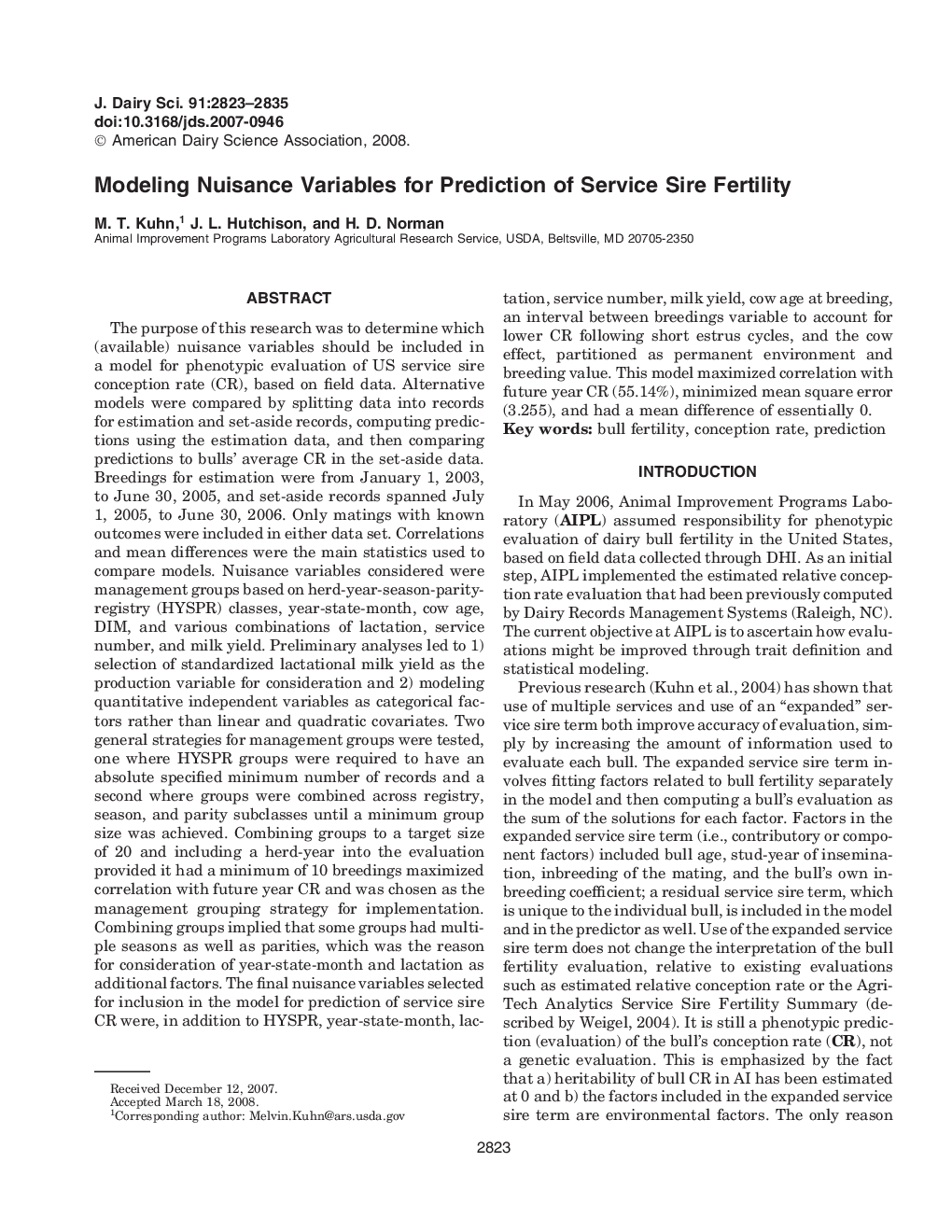| کد مقاله | کد نشریه | سال انتشار | مقاله انگلیسی | نسخه تمام متن |
|---|---|---|---|---|
| 2439922 | 1108107 | 2008 | 13 صفحه PDF | دانلود رایگان |
عنوان انگلیسی مقاله ISI
Modeling Nuisance Variables for Prediction of Service Sire Fertility
دانلود مقاله + سفارش ترجمه
دانلود مقاله ISI انگلیسی
رایگان برای ایرانیان
موضوعات مرتبط
علوم زیستی و بیوفناوری
علوم کشاورزی و بیولوژیک
علوم دامی و جانورشناسی
پیش نمایش صفحه اول مقاله

چکیده انگلیسی
The purpose of this research was to determine which (available) nuisance variables should be included in a model for phenotypic evaluation of US service sire conception rate (CR), based on field data. Alternative models were compared by splitting data into records for estimation and set-aside records, computing predictions using the estimation data, and then comparing predictions to bulls' average CR in the set-aside data. Breedings for estimation were from January 1, 2003, to June 30, 2005, and set-aside records spanned July 1, 2005, to June 30, 2006. Only matings with known outcomes were included in either data set. Correlations and mean differences were the main statistics used to compare models. Nuisance variables considered were management groups based on herd-year-season-parity-registry (HYSPR) classes, year-state-month, cow age, DIM, and various combinations of lactation, service number, and milk yield. Preliminary analyses led to 1) selection of standardized lactational milk yield as the production variable for consideration and 2) modeling quantitative independent variables as categorical factors rather than linear and quadratic covariates. Two general strategies for management groups were tested, one where HYSPR groups were required to have an absolute specified minimum number of records and a second where groups were combined across registry, season, and parity subclasses until a minimum group size was achieved. Combining groups to a target size of 20 and including a herd-year into the evaluation provided it had a minimum of 10 breedings maximized correlation with future year CR and was chosen as the management grouping strategy for implementation. Combining groups implied that some groups had multiple seasons as well as parities, which was the reason for consideration of year-state-month and lactation as additional factors. The final nuisance variables selected for inclusion in the model for prediction of service sire CR were, in addition to HYSPR, year-state-month, lactation, service number, milk yield, cow age at breeding, an interval between breedings variable to account for lower CR following short estrus cycles, and the cow effect, partitioned as permanent environment and breeding value. This model maximized correlation with future year CR (55.14%), minimized mean square error (3.255), and had a mean difference of essentially 0.
ناشر
Database: Elsevier - ScienceDirect (ساینس دایرکت)
Journal: Journal of Dairy Science - Volume 91, Issue 7, July 2008, Pages 2823-2835
Journal: Journal of Dairy Science - Volume 91, Issue 7, July 2008, Pages 2823-2835
نویسندگان
M.T. Kuhn, J.L. Hutchison, H.D. Norman,